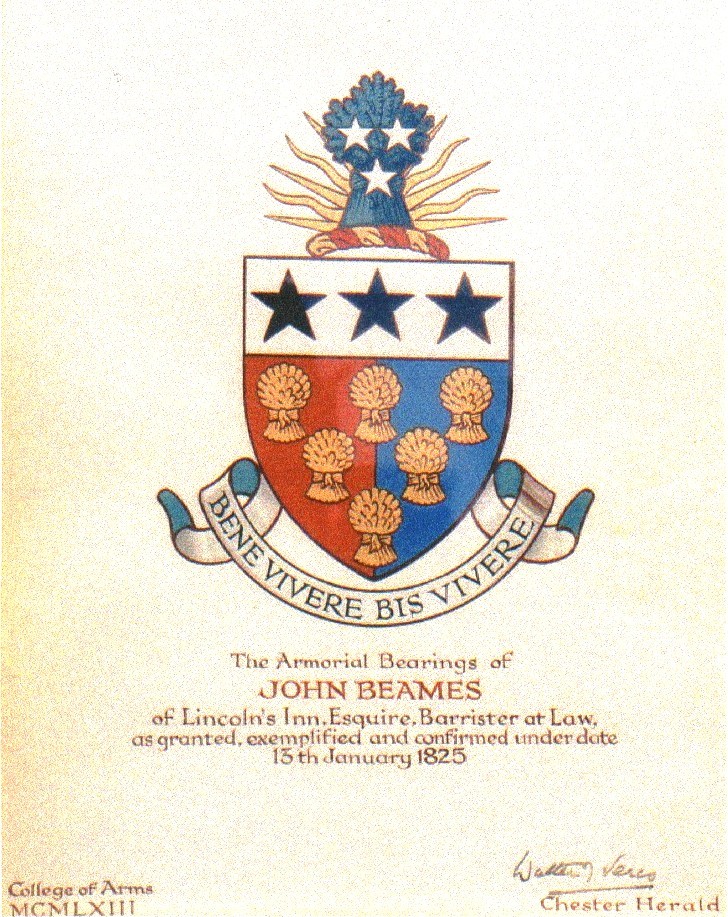
The Arms of Beames, granted to John Beames (IV) on 13th January 1835
Per pale Gules and Azure, six garbs three, two and one Or; and on a chief Argent three mullets Sable. And for crest, on a wreath of the liveries, on a garb Vert before a demi-sun Or, three mullets Argent.
That is:
The shield is divided vertically through the centre and the background is red or the right and blue on the left. (A shield is always described by reference to the person bearing it on his arm and not to people looking at it from in front: so on your left is the shield's right.)
On the background are placed six gold garbs in three lines - three at the top, then two and one on its own. A garb is a sheaf of wheat. If the sheaf is made up of some other grain, e.g. barley it is still called a garb but the kind of grain must be stated.
The chief is a band across the top of the shield and occupying about one third of the shield's surface. The chief is silver but it is a common practice to represent silver with white: heraldry does not recognise a colour called white so there can be no confusion. On the chief are placed three five-pointed stars. The word mullet is derived from the French molette meaning a spur rowel. A mullet can have more than five points but then the number must be specified.
A crest is usually placed above a wreath consisting of six twists. The liveries are the principal metal and the principal colour on the shield. The principal metal is the gold of the garbs and the principal colour is red. The right side of the shield is senior to the left so red predominates over blue. The metal and colour are always depicted in a wreath with the metal first (i.e. on the right) and the colour second.
The main item of the crest is another garb, this one green, and with again three mullets but this time silver. From behind the garb appears the top half of a sunburst (for a whole sunburst - see the Carnarvon arms).
(per George Henry Garfield Tilling - July 2001)